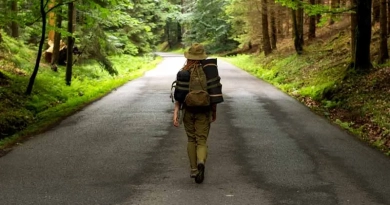
How Do I Deal with Hiking in Extreme Weather Conditions?
As dawn broke over the rugged peaks, the air was already buzzing with the sharp bite of an oncoming storm. It’s in these moments, standing at the threshold of the wild, that one pivotal question emerges: How do I deal with hiking in extreme weather conditions? This isn’t just about enduring the elements—it’s about mastering them, about making the right decisions that ensure safety while embracing the raw beauty of nature.
Navigating Extreme Weather Conditions on Hiking Trails
Hiking through extreme weather conditions is an undeniable test of one’s physical stamina, but the challenge extends far beyond physical endurance. It demands thorough preparation, adaptability, and a deep respect for the formidable power of nature. Let’s delve deeper into how these conditions affect hikers and the specific strategies required to manage them effectively.
Understanding the Risks and Challenges
Heat and Humidity: These conditions are perhaps the most deceptive because the threat may not be as immediately perceptible as a snowstorm. However, the risks are significant. Dehydration can set in quickly without noticeable sweating, heat exhaustion can creep up unnoticed, and heatstroke represents a serious medical emergency. The body’s cooling mechanisms are pushed to their limits, and without proper hydration and cooling strategies, the situation can become critical.
Cold and Snow: The challenges here are starkly different. The cold can numb senses, slow down physical responses, and, if exposure is prolonged, lead to hypothermia or frostbite. Navigating snow and ice requires not only physical skill but also specialized equipment to safely traverse slippery and potentially treacherous paths.
Rain and Wind: These conditions combine to create a hiking environment that can chill a hiker quickly, especially if gear becomes wet and wind increases the rate of heat loss. Trails become slippery, increasing the risk of falls, and low visibility can disorient even the most experienced hikers, making the path forward unclear and potentially dangerous.
Tailored Strategies for Safety and Enjoyment
Preparation and Knowledge: The foundation of safe hiking in extreme conditions lies in preparation. This preparation involves understanding the specific challenges associated with different weather conditions—whether it’s recognizing the signs of heatstroke in hot weather or knowing the symptoms of hypothermia in cold conditions. Practical, hands-on preparation includes training on navigation tools and first aid, ensuring you can respond effectively to any situation you might encounter on the trail.
Gear and Equipment: Selecting the right gear is crucial for managing extreme conditions:
- For Heat: Opt for breathable, moisture-wicking clothing that covers the skin to protect against the sun. A hydration pack is essential to maintain fluid levels, and a broad-brimmed hat can provide shade and reduce the risk of heatstroke.
- For Cold: Layering is key. Maintaining body temperature and dryness will be easier with a base layer that wicks away moisture, an insulating layer, and a waterproof and windproof outer layer. Insulated boots will protect against cold and damp conditions.
- For Rain: Waterproof and breathable outerwear is essential to stay dry. Water-resistant boots with good grip and gaiters will help keep feet dry and add stability on muddy or slippery trails.
Physical and Mental Readiness: Hiking in extreme conditions requires a higher level of overall fitness and mental resilience. The elements significantly increase the physical demands, and the mental load of constant vigilance and decision-making can be taxing. Building physical endurance through regular exercise and conditioning specific to hiking activities, such as climbing or long-distance walking, is essential. Mentally, preparing through meditation, visualization, or stress management techniques can enhance resilience and focus.
Adjusting Hiking Practices:
- In Heat: It’s wise to hike during cooler parts of the day, such as early morning or late evening, and take regular breaks in shaded areas to cool down and hydrate.
- In Cold: Maintain a steady pace to generate body heat but avoid sweating excessively, which can lead to chilling when the pace slows or stops. Waterproof and insulated gear is crucial to staying warm and dry.
- In Rain or Wind: Choose well-marked trails to avoid getting lost in reduced visibility, use trekking poles for additional stability, and be extra cautious on rocky or slippery surfaces.
By thoroughly understanding these specific conditions and implementing tailored strategies, hikers can transform potential adversities into rewarding elements of their adventure. This approach not only enhances safety but also deepens the connection with nature, making each step a testament to resilience and respect for the mighty forces of the wild.
Tools and Resources Needed
Navigational Tools: GPS devices, maps, and compasses are indispensable, especially when visibility is poor.
Emergency Kit: This should include a whistle, a flashlight or headlamp, extra batteries, a fire-starting kit, and an emergency shelter.
Health and Safety Gear: First aid kit, sunscreen, insect repellent, and water purification tablets.
Communication Devices: A cell phone with emergency numbers pre-saved and possibly a satellite phone or a personal locator beacon, especially in remote areas.
Concluding Thoughts: Embracing the Extremes
As the storm cleared and the last of the rain dripped from the pine needles, I reflected on the day’s journey. Hiking in extreme weather conditions isn’t merely about enduring but also about engaging deeply with the environment, respecting its power, and preparing meticulously. With the right knowledge, equipment, and attitude, even the most extreme weather becomes a memorable part of your hiking story, not an insurmountable barrier. So gear up, step out, and let every step you take in the wild be a testament to your respect for nature and your readiness to meet its challenges.






